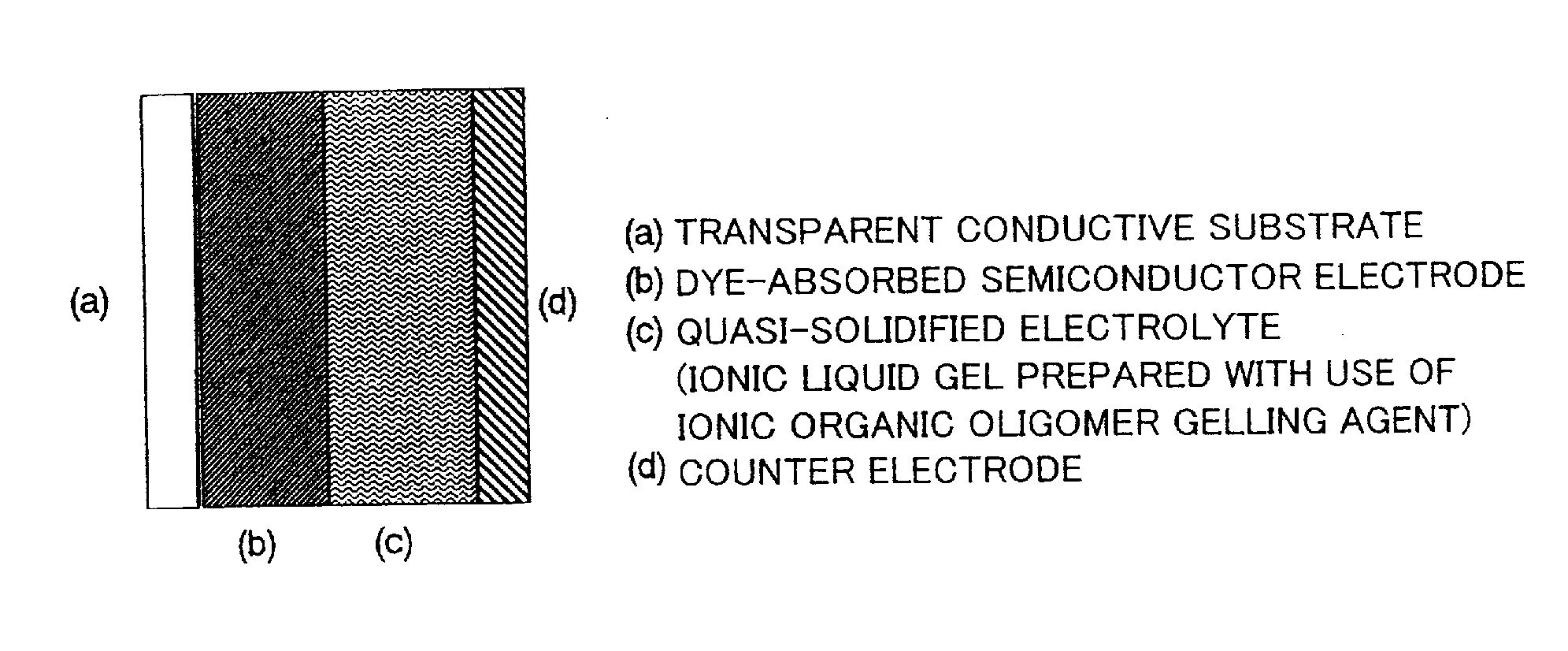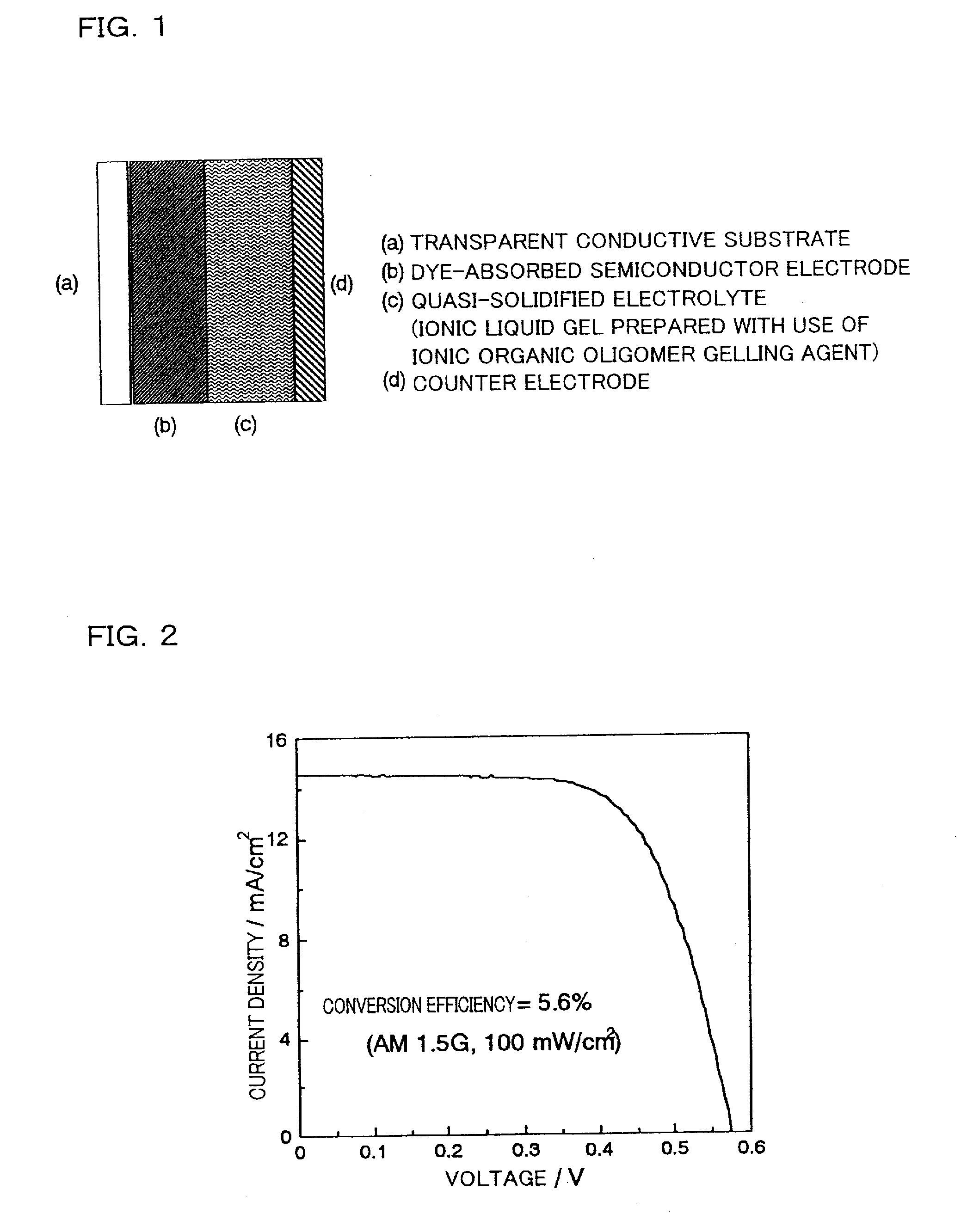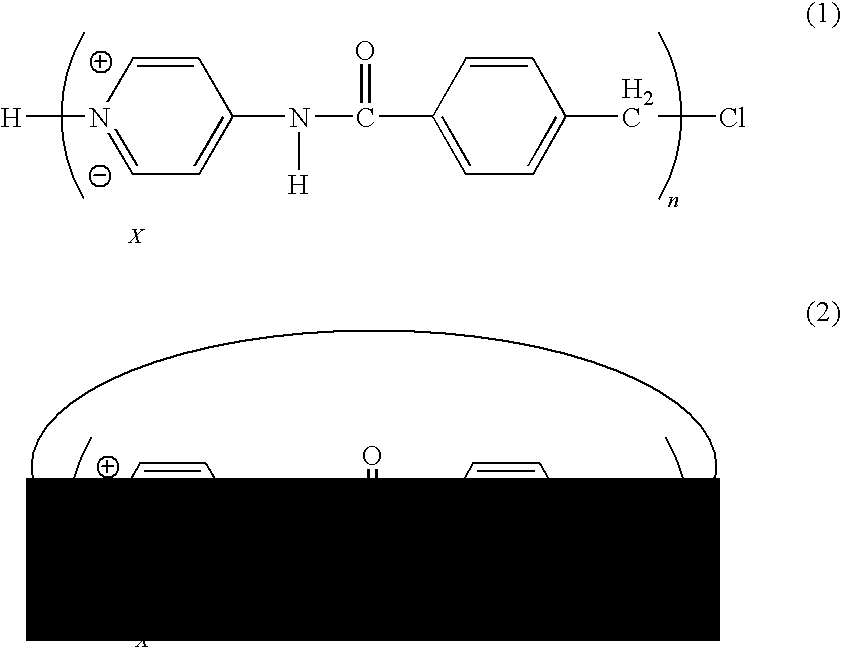Ionic gel electrolyte, dye-sensitized photoelectric conversion device and solar cell
- Summary
- Abstract
- Description
- Claims
- Application Information
AI Technical Summary
Benefits of technology
Problems solved by technology
Method used
Image
Examples
example 1
Synthesizing Example 1
Oligomer Represented by Formulae (1) and (2) in which Anions are Iodine
[0073]Ionic organic oligomer was produced as follows. 4.27 g of 4-aminopyridine and 8.34 g of 4-(chloromethyl)benzoyl chloride were mixed with each other in 100 mL of dry dichloromethane in the presence of 6.95 mL of triethylamine, and the resultant was stirred at room temperature for one night. Consequently, white precipitate was produced. The white precipitate was filtered to obtain 9.51 g of ionic organic oligomer whose X was a chloride anion. The yield of the ionic organic oligomer was 85%.
[0074]20 mL of water was added to 150 mL of white power thus obtained, the resultant was heated so that the white powder was dissolved completely. To the solution was added 20 mL of an aqueous solution of 8.81 g of ammonium iodide under heating and reflux, and the resultant was subjected to heating and reflux for 10 minutes. Thereafter, the reacting solution was cooled down to room temperature to depos...
example 2
Formation of Transparent Conductive Substrate
[0075]A paste containing TiO2 nanoparticles, of 10 to 30 nm in thickness, was screen-printed on a fluorine-doped SnO2-coated transparent conductive glass substrate (hereinafter referred to as FTO glass substrate), and the resultant was sintered at 500° C. to obtain a nanoporous TiO2 thin film electrode of approximately 6 nm in thickness. The TiO2 electrode was immersed in an ethanol solution containing Ru N719 dye for 24 hours so that the dye was absorbed in the TiO2 surface.
example 3
Formation of Dye-Sensitized Photoelectric Conversion Device and Solar Cell
[0076]There was prepared a sealed cell made of a dye-absorbed TiO2 electrode, a counter electrode obtained by sputtering Pt on a FTO glass substrate, and a spacer (thermocompression resin). The ionic liquid gel electrolyte in Example 1 that was separately prepared (ionic liquid gel electrolyte obtained by causing a gelling agent that was organic oligomer whose anion was an iodide ion to be dissolved at high temperature in 1-n-propyl-3-methylimidazolium iodide (containing 10% of water) containing 0.3M of iodine, 0.05M of lithium iodide, and 0.1M of t-butylpyridine so that concentration of the gelling agent was 40 g / L) was poured into the cell in a high temperature condition (approximately 120° C.) before the gelation began. Then, the cell was cooled down and thus a gelled electrolyte cell was prepared.
[0077]Under irradiation of light with AM1.5G (100 mW / cm2), the current-voltage characteristic of the cell was m...
PUM
 Login to View More
Login to View More Abstract
Description
Claims
Application Information
 Login to View More
Login to View More - R&D
- Intellectual Property
- Life Sciences
- Materials
- Tech Scout
- Unparalleled Data Quality
- Higher Quality Content
- 60% Fewer Hallucinations
Browse by: Latest US Patents, China's latest patents, Technical Efficacy Thesaurus, Application Domain, Technology Topic, Popular Technical Reports.
© 2025 PatSnap. All rights reserved.Legal|Privacy policy|Modern Slavery Act Transparency Statement|Sitemap|About US| Contact US: help@patsnap.com



